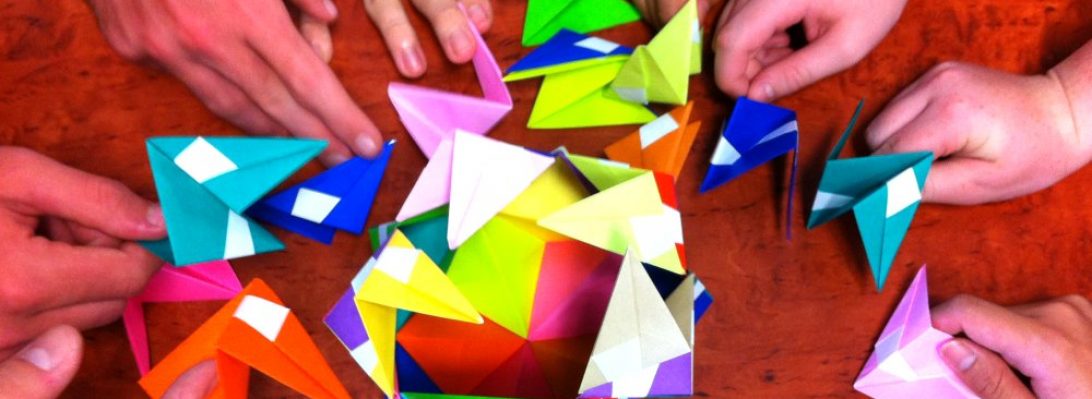An unmissable opportunity presented itself where both OSME and Folding Australia conferences were to be hosted in Melbourne, Australia, one following the other. Having never attended an Origami conference (of any flavour) before, I jumped at the chance, but had little idea, really, what was ahead.
My wife and I got an Air BnB on Collins street for the week. Using the PT> train network, I travelled to and from Swinburne Uni for the international gatherings each day while Jo explored Melbourne Galleries and cafes.
I believed OSME stood for Origami, Science, Mathematics and Engineering – turns out the “E” was for Education, even though in this conference there were 2 Engineering strands … so, ok then. It seems the 8th iteration of this conference reflects origami/folding now so popular as an engineering concept.
The 3 days were divided up into Morning Plenary Lectures, followed by 4 concurrent strands of presentations. the strands were
Engineering 1 – Rigid Origami, Thick Origami, Curved Origami, Kirigami
Engineering 2 – Other applications, Metamaterials, Robotics,
Maths, Computation and History
Design and Education – Design theory, Tessellations, Design – other.
I attended a few sessions from each of the Engineering sessions – many theoretical explorations of fold-related applications and theory – I was surprised how much I could understand in what were, at times, really dense topics presented as overviews of more complete papers. We saw LOTS of applications of folded surfaces, thick folded structures and vaguely fold-related things – all interesting.
Plenary lectures were a real mix between dense mathematical analysis of origami-inspired metamaterials, artistic works from Tomoko Fuse and Darryl Bedford, mathematical analysis of stress patterns in transforming modular structures that hinge and so much more … so much to take in.
I was fascinated by origami-inspired robotics and the musical applications of folded instruments by Matthew Gardiner – bendy structures that could sense touch and bend to “control” sound – reminiscent of some of my weirder moments with my Theremin. It was amazing to be sitting in a session with Jason Ku, beside legends like Robert Lang, Eric Domain, Joseph Wu. Folding curves on straight pleats with Goran Konjevod or to catch up with Joe Gattas, and talk with Tomohiro Tachi and Tomoko Fuse – just wow. I learned about self-folding origami, folding thick things into small shapes, load bearing structures and played with metamaterials that could morph into completely different shapes. Also there was the opportunity to connect with people from OrigamiDan – a discord that I am a member of – lovely to put faces to names (even if I gained the title of “the oldest dan”).
There was a gallery of exhibits related to presented sessions, some fascinating models, components, musical instruments that you could play with, models designed to demonstrate prototypes that you were encouraged to pick up and manipulate – some fabulous stuff, most of which clearly related to folding applications.
It was an amazing opportunity, even though I was just a folder (not a researcher, like most present) and certainly opened my eyes to the vast scope of application that folding has. I think back to the advice I got from my own school career guidance counsellor who suggested I would not get the marks necessary to get into Engineering, steering me away from a field I now incidentally spend quite a lot of time and effort actually doing … retrospect is something we all have perfect vision of I guess.
Would I want to go to another OSME? Sure … if it were coupled with a paper folding local group convention (like this one). Theory, for me, needed to be balanced with hands-on folding – things I could do using a sheet of paper. That may make me a pedant, but meh. The OSME mix of topics has something for everyone with the term “origami” being fairly loosely interpreted at times, but the mechanics of folding was evident everywhere and it was clear with some passion.
It was such a privilege to have been able to attend 8OSME.







